- A List of Writing Contests in 2022 | Exciting Prizes!
- Em Dash vs. En Dash vs. Hyphen: When to Use Which
- Book Proofreading 101: The Beginner’s Guide
- Screenplay Editing: Importance, Cost, & Self-Editing Tips
- Screenplay Proofreading: Importance, Process, & Cost
- Script Proofreading: Rates, Process, & Proofreading Tips
- Manuscript Proofreading | Definition, Process & Standard Rates
- Tips to Write Better if English Is Your Second Language
- Novel Proofreading | Definition, Significance & Standard Rates
- Top 10 Must-Try Writing Prompt Generators in 2024
- 100+ Creative Writing Prompts for Masterful Storytelling
- Top 10 eBook Creator Tools in 2024: Free & Paid
- 50 Timeless and Unforgettable Book Covers of All Time
- What Is Flash Fiction? Definition, Examples & Types
- 80 Enchanting Christmas Writing Prompts for Your Next Story
- Your Guide to the Best eBook Readers in 2024
- Top 10 Book Review Clubs of 2025 to Share Literary Insights
- 2024’s Top 10 Self-Help Books for Better Living
- Writing Contests 2023: Cash Prizes, Free Entries, & More!
- What Is a Book Teaser and How to Write It: Tips and Examples
- Audiobook vs. EBook vs. Paperback in 2024: (Pros & Cons)
- How to Get a Literary Agent in 2024: The Complete Guide
- Alpha Readers: Where to Find Them and Alpha vs. Beta Readers
- Author Branding 101: How to Build a Powerful Author Brand
- A Guide on How to Write a Book Synopsis: Steps and Examples
- How to Write a Book Review (Meaning, Tips & Examples)
- 50 Best Literary Agents in the USA for Authors in 2024
- Building an Author Website: The Ultimate Guide with Examples
- Top 10 Paraphrasing Tools for All (Free & Paid)
- Top 10 Book Editing Software in 2024 (Free & Paid)
- What Are Large Language Models and How They Work: Explained!
- Top 10 Hardcover Book Printing Services [Best of 2024]
- 2024’s Top 10 Setting Generators to Create Unique Settings
- Different Types of Characters in Stories That Steal the Show
- Top 10 Screenplay & Scriptwriting Software (Free & Paid)
- 10 Best AI Text Generators of 2024: Pros, Cons, and Prices
- Top 10 Must-Try Character Name Generators in 2024
- 10 Best AI Text Summarizers in 2024 (Free & Paid)
- 2024’s 10 Best Punctuation Checkers for Error-Free Text
- Top 10 AI Rewriters for Perfect Text in 2024 (Free & Paid)
- 11 Best Story Structures for Writers (+ Examples!)
- How to Write a Book with AI in 2024 (Free & Paid Tools)
- Writing Contests 2024: Cash Prizes & Free Entries!
- Patchwork Plagiarism: Definition, Types, & Examples
- 15 Powerful Writing Techniques for Authors in 2024
- Simple Resume Formats for Maximum Impact With Samples
- What Is a Complement in a Sentence? (Meaning, Types & Examples)
- What are Clauses? Definition, Meaning, Types, and Examples
- Persuasive Writing Guide: Techniques & Examples
- How to Paraphrase a Text (Examples + 10 Strategies!)
- Generative AI: Types, Impact, Advantages, Disadvantages
- A Simple Proofreading Checklist to Catch Every Mistake
- Top 10 AI Resume Checkers for Job Seekers (Free & Paid)
- 20 Best Comic Book Covers of All Time!
- How to Edit a Book: A Practical Guide with 7 Easy Steps
- How to Write an Autobiography (7 Amazing Strategies!)
- How to Publish a Comic Book: Nine Steps & Publishing Costs
- Passive and Active Voice (Meaning, Examples & Uses)
- How to Publish a Short Story & Best Publishing Platforms
- What Is Expository Writing? Types, Examples, & 10 Tips
- 10 Best Introduction Generators (Includes Free AI Tools!)
- Creative Writing: A Beginner’s Guide to Get Started
- How to Sell Books Online (Steps, Best Platforms & Tools)
- Top 10 Book Promotion Services for Authors (2025)
- 15 Different Types of Poems: Examples & Insight into Poetic Styles
- 25 Figures of Speech Simplified: Definitions and Examples
- 10 Best Book Writing Apps for Writers 2025: Free & Paid!
- Top 10 AI Humanizers of 2025 [Free & Paid Tools]
- Top 101 Bone-Chilling Horror Writing Prompts
- How to Write a Poem: Step-by-Step Guide to Writing Poetry
- Top 10 Book Writing Software, Websites, and Tools in 2025
- 100+ Amazing Short Story Ideas to Craft Unforgettable Stories
- The Top 10 Literary Devices: Definitions & Examples
- Top 10 AI Translators for High-Quality Translation in 2025
- Top 10 AI Tools for Research in 2025 (Fast & Efficient!)
- 50 Best Essay Prompts for College Students in 2025
- Top 10 Book Distribution Services for Authors in 2025
- Best 101 Greatest Fictional Characters of All Time
- Top 10 Book Title Generators of 2025
- Best Fonts and Sizes for Books: A Complete Guide
- What Is an Adjective? Definition, Usage & Examples
- How to Track Changes in Google Docs: A 7-Step Guide
- Best Book Review Sites of 2025: Top 10 Picks
- Parts of a Book: A Practical, Easy-to-Understand Guide
- What Is an Anthology? Meaning, Types, & Anthology Examples
- How to Write a Book Report | Steps, Examples & Free Template
- 10 Best Plot Generators for Engaging Storytelling in 2025
- 30 Powerful Poems About Life to Inspire and Uplift You
- What Is a Poem? Poetry Definition, Elements, & Examples
- Metonymy: Definition, Examples, and How to Use It In Writing
- How to Write a CV with AI in 9 Steps (+ AI CV Builders)
- What Is an Adverb? Definition, Types, & Practical Examples
- How to Create the Perfect Book Trailer for Free
- Top 10 Book Publishing Companies in 2025
- 14 Punctuation Marks: A Guide on How to Use with Examples!
- Translation Services: Top 10 Professional Translators (2025)
- 10 Best Free Online Grammar Checkers: Features and Ratings
- 30 Popular Children’s Books Teachers Recommend in 2025
- 10 Best Photobook Makers of 2025 We Tested This Year
- Top 10 Book Marketing Services of 2025: Features and Costs
- Top 10 Book Printing Services for Authors in 2025
- 10 Best AI Detector Tools in 2025
- Writing Contests 2025: Cash Prizes, Free Entries, and More!
- Audiobook Marketing Guide: Best Strategies, Tools & Ideas
- 10 Best AI Writing Assistants of 2025 (Features + Pricing)
- What is a Book Copyright Page?
- Final Checklist: Is My Article Ready for Submitting to Journals?
- 8 Pre-Publishing Steps to Self-Publish Your Book
- 7 Essential Elements of a Book Cover Design
- How to Copyright Your Book in the US, UK, & India
- Beta Readers: Why You Should Know About Them in 2024
- How to Publish a Book in 2024: Essential Tips for Beginners
- ISBN Guide 2024: What Is an ISBN and How to Get an ISBN
- Book Cover Design Basics: Tips & Best Book Cover Ideas
- Why and How to Use an Author Pen Name: Guide for Authors
- How to Format a Book in 2025: 7 Tips for Book Formatting
- What is Manuscript Critique? Benefits, Process, & Cost
- 10 Best Ghostwriting Services for Authors in 2025
- How to Hire a Book Editor in 5 Practical Steps
- Self-Publishing Options for Writers
- How to Promote Your Book Using a Goodreads Author Page
- 7 Essential Elements of a Book Cover Design
- What Makes Typesetting a Pre-Publishing Essential for Every Author?
- 4 Online Publishing Platforms To Boost Your Readership
- Typesetting: An Introduction
- Quick Guide to Novel Editing (with a Self-Editing Checklist)
- Self-Publishing vs. Traditional Publishing: 2024 Guide
- How to Publish a Book in 2024: Essential Tips for Beginners
- ISBN Guide 2024: What Is an ISBN and How to Get an ISBN
- How to Publish a Book on Amazon: 8 Easy Steps [2024 Update]
- What are Print-on-Demand Books? Cost and Process in 2024
- What Are the Standard Book Sizes for Publishing Your Book?
- How to Market Your Book on Amazon to Maximize Sales in 2024
- Top 10 Hardcover Book Printing Services [Best of 2024]
- How to Find an Editor for Your Book in 8 Steps (+ Costs!)
- What Is Amazon Self-Publishing? Pros, Cons & Key Insights
- Manuscript Editing in 2024: Elevating Your Writing for Success
- Know Everything About How to Make an Audiobook
- A Simple 14-Point Self-Publishing Checklist for Authors
- How to Write an Engaging Author Bio: Tips and Examples
- Book Cover Design Basics: Tips & Best Book Cover Ideas
- How to Publish a Comic Book: Nine Steps & Publishing Costs
- Why and How to Use an Author Pen Name: Guide for Authors
- How to Sell Books Online (Steps, Best Platforms & Tools)
- A Simple Guide to Select the Best Self-Publishing Websites
- 10 Best Book Cover Design Services of 2025: Price & Ratings
- How Much Does It Cost to Self-Publish a Book in 2025?
- How to Self-Publish a Book: Tips and Prices (2025)
- Quick Guide to Book Editing [Complete Process & Standard Rates]
- How to Distinguish Between Genuine and Fake Literary Agents
- What is Self-Publishing? Everything You Need to Know
- How to Copyright a Book in 2025 (Costs + Free Template)
- The Best eBook Conversion Services of 2025: Top 10 Picks
- 10 Best Self-Publishing Companies of 2025: Price & Royalties
- 10 Best Photobook Makers of 2025 We Tested This Year
- How to start your own online publishing company?
- 8 Tips To Write Appealing Query Letters
- Self-Publishing vs. Traditional Publishing: 2024 Guide
- How to Publish a Book in 2024: Essential Tips for Beginners
- ISBN Guide 2024: What Is an ISBN and How to Get an ISBN
- What are Print-on-Demand Books? Cost and Process in 2024
- How to Write a Query Letter (Examples + Free Template)
- Third-person Point of View: Definition, Types, Examples
- How to Write an Engaging Author Bio: Tips and Examples
- How to Publish a Comic Book: Nine Steps & Publishing Costs
- Top 10 Book Publishing Companies in 2025
- 10 Best Photobook Makers of 2025 We Tested This Year
- How to Create Depth in Characters
- Starting Your Book With a Bang: Ways to Catch Readers’ Attention
- Research for Fiction Writers: A Complete Guide
- Short stories: Do’s and don’ts
- How to Write Dialogue: 7 Rules, 5 Tips & 65 Examples
- What Are Foil and Stock Characters? Easy Examples from Harry Potter
- How To Write Better Letters In Your Novel
- On Being Tense About Tense: What Verb Tense To Write Your Novel In
- How To Create A Stellar Plot Outline
- How to Punctuate Dialogue in Fiction
- On Being Tense about Tense: Present Tense Narratives in Novels
- The Essential Guide to Worldbuilding [from Book Editors]
- What Is Point of View? Definition, Types, & Examples in Writing
- How to Create Powerful Conflict in Your Story | Useful Examples
- How to Write a Book: A Step-by-Step Guide
- How to Write a Short Story in 6 Simple Steps
- How to Write a Novel: 8 Steps to Help You Start Writing
- What Is a Stock Character? 150 Examples from 5 Genres
- Joseph Campbell’s Hero’s Journey: Worksheet & Examples
- Novel Outline: A Proven Blueprint [+ Free Template!]
- Character Development: 7-Step Guide for Writers
- What Is NaNoWriMo? Top 7 Tips to Ace the Writing Marathon
- What Is the Setting of a Story? Meaning + 7 Expert Tips
- Theme of a Story | Meaning, Common Themes & Examples
- What Is a Blurb? Meaning, Examples & 10 Expert Tips
- What Is Show, Don’t Tell? (Meaning, Examples & 6 Tips)
- How to Write a Book Summary: Example, Tips, & Bonus Section
- How to Write a Book Description (Examples + Free Template)
- 10 Best Free AI Resume Builders to Create the Perfect CV
- A Complete Guide on How to Use ChatGPT to Write a Resume
- 10 Best AI Writer Tools Every Writer Should Know About
- How to Write a Book Title (15 Expert Tips + Examples)
- 100 Novel and Book Ideas to Start Your Book Writing Journey
- Exploring Writing Styles: Meaning, Types, and Examples
- Mastering Professional Email Writing: Steps, Tips & Examples
- How to Write a Screenplay: Expert Tips, Steps, and Examples
- Business Proposal Guide: How to Write, Examples and Template
- Different Types of Resumes: Explained with Tips and Examples
- How to Create a Memorable Protagonist (7 Expert Tips)
- How to Write an Antagonist (Examples & 7 Expert Tips)
- Writing for the Web: 7 Expert Tips for Web Content Writing
- 10 Best AI Text Generators of 2024: Pros, Cons, and Prices
- What are the Parts of a Sentence? An Easy-to-Learn Guide
- How to Avoid AI Detection in 2024 (6 Proven Techniques!)
- How to Avoid Plagiarism in 2024 (10 Effective Strategies!)
- What Is Climax Of A Story & How To Craft A Gripping Climax
- What Is a Subject of a Sentence? Meaning, Examples & Types
- Object of a Sentence: Your Comprehensive Guide
- What Is First-Person Point of View? Tips & Practical Examples
- Second-person Point of View: What Is It and Examples
- 10 Best AI Essay Outline Generators of 2024
- Third-person Point of View: Definition, Types, Examples
- The Importance of Proofreading: A Comprehensive Overview
- Patchwork Plagiarism: Definition, Types, & Examples
- Simple Resume Formats for Maximum Impact With Samples
- The Ultimate Guide to Phrases In English – Types & Examples
- Modifiers: Definition, Meaning, Types, and Examples
- What are Clauses? Definition, Meaning, Types, and Examples
- Persuasive Writing Guide: Techniques & Examples
- What Is a Simile? Meaning, Examples & How to Use Similes
- Mastering Metaphors: Definition, Types, and Examples
- Generative AI: Types, Impact, Advantages, Disadvantages
- How to Publish a Comic Book: Nine Steps & Publishing Costs
- Essential Grammar Rules: Master Basic & Advanced Writing Skills
- Benefits of Using an AI Writing Generator for Editing
- Hyperbole in Writing: Definition and Examples
- 15 Best ATS-Friendly ChatGPT Prompts for Resumes in 2025
- How to Write a Novel in Past Tense? 3 Steps & Examples
- 10 Best Spell Checkers of 2025: Features, Accuracy & Ranking
- Foil Character: Definition, History, & Examples
- 5 Key Elements of a Short Story: Essential Tips for Writers
- How to Write a Children’s Book: An Easy Step-by-Step Guide
- How To Write a Murder Mystery Story
- What Is an Adjective? Definition, Usage & Examples
- Metonymy: Definition, Examples, and How to Use It In Writing
- Fourth-Person Point of View: A Unique Narrative Guide
- How to Write a CV with AI in 9 Steps (+ AI CV Builders)
- What Is an Adverb? Definition, Types, & Practical Examples
- How to Write A Legal Document in 6 Easy Steps
- 10 Best AI Story Generators in 2025: Write Captivating Tales
- How to Introduce a Character Effectively
- What is Rhetoric and How to Use It in Your Writing
- How to Write a Powerful Plot in 12 Steps
- How to Make Money as a Writer: Your First $1,000 Guide
- How to Write SEO Content: Tips for SEO-Optimized Content
- Types of Introductions and Examples
- How to Create Marketing Material
- What is a Cliffhanger? Definition, Examples, & Writing Tips
- How to Write Cliffhangers that Keep Readers Hooked!
- How to Write a Romance Novel: Step-by-Step Guide
- Top 10 Writing Tips from Famous Authors
- 10 Best Ghostwriting Services for Authors in 2025
- What is Ghostwriting? Meaning and Examples
- How to Become a Ghostwriter: Complete Career Guide
- How to Write a Speech that Inspires (With Examples)
- 10 Best AI Writing Assistants of 2025 (Features + Pricing)
Still have questions? Leave a comment

Checklist: Dissertation Proposal
Enter your email id to get the downloadable right in your inbox!
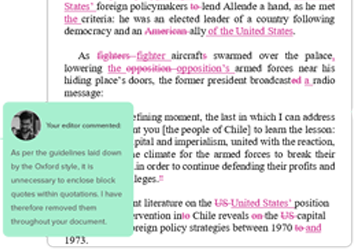
Examples: Edited Papers
Enter your email id to get the downloadable right in your inbox!
Need
Editing and
Proofreading Services?

25 Figures of Speech Simplified: Definitions and Examples
 Apr 06, 2025
Apr 06, 2025 7
min read
7
min read
- Tags: Book Writing, Fiction Writing, Novel Writing
Want to make your writing more exciting? Figures of speech are the answer! They transform ordinary sentences into memorable expressions.
This article dives into 25 commonly used figures of speech, offering clear explanations and practical examples. So, if you love playing with words, this article is for you!
Let’s first quickly understand the figure of speech meaning.
What is a figure of speech?
Figures of speech, also known as figurative speech, are useful language techniques that convey ideas beyond the actual meaning of words. They make words more fun to read. Whether it is music, books, speaking, or poems, figures of speech are used everywhere!
Figures of speech vs. figurative language
Figures of speech and figurative language are often used interchangeably, but they have distinct meanings. Figurative language refers to the use of words or phrases that deviate from their literal meaning to convey a more complex or vivid idea. Figures of speech, on the other hand, are specific techniques used to create figurative language. In other words, figurative language is the umbrella term that encompasses various figures of speech, such as metaphors, similes, personification, and hyperbole.
Now, let’s explore the types of figures of speech in detail!
1. Metaphor
A metaphor compares different ideas without using the words “like” and “as”. It shows a shared quality or feature between compared ideas. For example:
The classroom was a zoo.
In this example, a classroom full of noisy kids is compared to a zoo full of noisy wild animals.
2. Simile
A simile compares ideas using the words “like” and “as”. They help readers understand the thing described by relating it to something they already know. For example:
The runner was as fast as lightning, racing towards the finish line.
In this sentence, the runner’s speed is compared to lightning.
3. Alliteration
Alliteration is a writing technique where words starting with the same consonant sound are used in the same phrase or sentence together. It’s like a tongue twister that repeats the same letter or sound at the beginning of multiple words. For example:
The big blue balloon bounced off the boy.
In the above sentence, the “b” sound is repeated at the beginning of multiple words.
4. Personification
Personification is a figure of speech where human qualities, actions, or emotions are given to non-human things. It is different from anthropomorphism where non-human things are not only given human traits but also act like humans. Here are some examples of personification:
The sun smiled down on the children playing in the park.
In the above example, the sun is given the human quality of smiling.
5. Antithesis
Antithesis is a figure of speech where two opposite ideas are placed together in a sentence to create a contrast. Think of it like a seesaw, with one idea on one side and the opposite idea on the other side. For example:
It can be used to highlight a point, create a dramatic effect, or make a statement more memorable. For example:
My brother is tall, but I am short.
In this example, two opposite ideas of tall and short are placed in the same sentence to create a contrast.
6. Hyperbole
Hyperbole is a figure of speech that uses exaggeration to make a point. When you use hyperbole, you describe something as being much bigger, better, worse, or more intense than it really is. For example:
I’m so hungry, I could eat a horse!
Here, the level of hunger is exaggerated to emphasize it and make a point.
7. Onomatopoeia
Onomatopoeia is a figure of speech where sounds are described to create an effect. They help to make the description more engaging. For example:
The soda fizzed and hissed as it was poured into the glass.
In this sentence, the words “fizzed” and “hissed” describe the sound soda creates.
8. Anaphora
Anaphora is a writing technique where the same word or phrase is repeated at the beginning of multiple sentences. This helps to create an effect. For example:
He ran through the forest. He ran over the hills. He ran until he couldn’t run anymore.
In the above sentence, the phrase “He ran” is repeated to create an effect.
9. Allusion
An allusion is a brief, indirect reference to a famous person, place, event, literary work, or work of art. Allusions can add depth and meaning to a piece of writing. Let’s browse through an example to understand better!
He was as brave as Superman when he stood up to the bully.
Here, Superman is an allusion to the comic book superhero Superman.
10. Paradox
A paradox is a statement that seems contradictory or absurd but may be true in reality. It’s a situation or idea that appears illogical or self-contradictory. Here is an example:
Less is more.
This paradox suggests that having less of something can actually be better or more effective than having more.
11. Irony
Irony is a figure of speech where the words one expresses do not mean what their literal meaning indicates but mean the opposite. Often, irony refers to a situation or fact that is opposite to what you would expect, often in a funny or strange way. It’s like a twist or surprise that goes against what seems logical or normal. For example:
A dentist has bad teeth.
You would expect a dentist to have good teeth, so it’s ironic when a dentist has bad teeth.
12. Euphemism
A euphemism is a mild, indirect way of saying something that might be considered harsh, blunt, or offensive. It’s like using a softer or more pleasant word or phrase to talk about something unpleasant, embarrassing, or taboo. Here is an example of this:
He passed away on 9th November 2002.
Here, the word “passed away” is a gentler phrase for death, which can be a sensitive topic for many.
13. Synecdoche
Synecdoche is a figure of speech where a part of something is used to represent the whole, or the whole is used to represent a part. It helps to focus on a specific aspect of what is being described. For example:
The stage was filled with talented faces.
In the above sentence, the word “faces” (part) represents people (whole). Let’s see another example!
“England won the World Cup in 1966.”
In this sentence, England (whole) represents the English national football team (part) and not the whole country.
14. Litotes
Litotes is a figure of speech where something bad/negative is said to highlight the positive/good. It is usually used in creative writing and in informal speech. For example:
The party was not bad.
This means the party was actually quite good or enjoyable, but the speaker is understating it.
15. Oxymoron
An oxymoron is a figure of speech where two contradictory or opposing words are used to create a new meaning. When put together, two contradictory ideas express a unique or paradoxical meaning. For example:
There was a deafening silence in the hall.
Silence is the absence of sound, so it cannot be deafening. Deafening indicates an extremely loud noise. Hence, this is an oxymoron highlighting pin-drop silence.
16. Apostrophe
An apostrophe is a literary device in which a person addresses an inanimate object, someone, or something that is not there. It could be a person, an object, an abstract idea, or even a deceased individual. This writing technique is often used in poetry and dramatic works to express strong emotions, show closeness, or personify non-living objects.
Here is an example:
“Oh, moon, why must you shine so brightly on this sad day?”
(In this example, the speaker is directly addressing the moon, even though the moon cannot respond.)
17. Transferred Epithet
A transferred epithet is a descriptive word or phrase that is used to describe a noun. However, it’s not a word or phrase that would be usually used to describe that specific noun. For example:
He walked on the lonely streets.
The phrase “lonely streets” is a transferred epithet as streets can’t be lonely. “Lonely” is a word used to describe people.
18. Metonymy
Metonymy is a figure of speech where a word or phrase is used to highlight or focus on something related to it. In other words, it’s when you replace the name of something with a word closely associated with it. For example:
I love reading Sidney Sheldon.
In this example, “Sidney Sheldon” is used to represent the books written by him, not the person himself.
19. Climax
A climax is a figure of speech where ideas are arranged in the increasing order of their importance (ascending order). This creates a strong impression on the reader. Let’s see an example of this!
The cricketer trained for months, overcame injuries, and finally performed well in the T20 Cricket World Cup.
In this example, the ideas of training, overcoming injuries, and performing well are in ascending order. They reflect the cricketer’s journey.
20. Tautology
Tautology is a figure of speech in which an idea is repeated using different words that essentially mean the same thing. It’s an unnecessary repetition of a word or a phrase using synonyms and similar words. For example:
She saw it with her own eyes.
This sentence is an example of tautology as the word “own” is unnecessary since a person sees with their eyes.
21. Circumlocution
Circumlocution is a figure of speech in which a person uses more words than necessary to express an idea. The speaker or writer often uses a longer, more complex phrase or description to convey the same meaning. For example:
“This particular area appears to be suffering from a notable lack of tidiness and organization.”
In the above example, the writer uses a verbose description instead of saying, “The area is messy”.
22. Understatement
An understatement is a figure of speech in which a person expresses an idea and makes it seem less important or serious. This is often done by using words or phrases that are mild, neutral, or positive. For example:
“It’s just a scratch”. (to describe a serious injury.)
23. Chiasmus
Chiasmus is a way of writing or speaking where you switch the order of words or phrases. It is often used to create a sense of balance or contrast and can make the sentence more memorable. For example:
“Ask not what your country can do for you; ask what you can do for your country.” – John F. Kennedy
In the above sentence, the order of the words “what your country can do for you” is changed.
24. Epigram
An epigram is a short, clever, and memorable statement that often expresses a general truth or observation. Epigrams are typically concise and thought-provoking. For example:
“Little strokes fell great oaks.” – Benjamin Franklin
This epigram suggests that small, consistent efforts can overcome even the greatest challenges.
The final technique in our figures of speech list is polysyndeton. Let’s explore this technique in detail!
25. Polysyndeton
Polysyndeton is a figure of speech in which a writer uses multiple coordinating conjunctions (such as “and,” “or,” “but,” or “nor”), even when they are not grammatically necessary. This creates a rhythmic effect. For example:
I searched high and low, near and far, over and under, but I still couldn’t find my keys.
In the above sentence the repetition of conjunctions like “and” creates a rhythmic effect.
Now let’s see some figures of speech examples from well-known books!
Nine amazing examples of figures of speech
1. Simile
-
-
- “Loving someone is like moving into a house,” Sonja used to say. – A Man Called Ove by Fredrik Backman
- Words are like tiny bombs, Liesel. – The Book Thief by Markus Zusak
- “Her hair was like spun gold.” – Rapunzel by The Brothers Grimm
-
2. Personification
-
-
-
- “The wind howled through the trees.” – The Wind in the Willows by Kenneth Grahame
- “The flowers danced in the breeze.” – Alice’s Adventures in Wonderland by Lewis Carroll
- “The waves crashed against the shore, as if angry at the land.” – The Old Man and the Sea by Ernest Hemingway
-
-
3. Paradox
-
-
-
- “Some rules are made to be broken.” – The Outsiders by S.E. Hinton
- “All animals are equal, but some animals are more equal than others.” – Animal Farm by George Orwell
- “You need to spend money to make money.” – Rich Dad Poor Dad by Robert Kiyosaki
-
-
While these examples show how figures of speech can be used in creative writing, this is not all. Let’s understand how to use figures of speech to improve daily conversations!
How to use figures of speech to enhance everyday conversations?
The following figures of speech can be used to make daily conversations engaging:
-
-
-
-
- Hyperbole: This figure of speech can be used to make conversations fun or convey distress.
-
-
-
For example, instead of saying: “I have a lot of work to do”, you could say: “I’m drowning in a sea of paperwork!” (conveying distress)
Another example is the sentence: “My internet is so slow, I could drive faster than it takes to load a webpage!”
-
-
- Irony: This involves saying the opposite of what you mean to be witty. If it’s pouring rain and someone says, “Lovely weather we’re having,” the irony adds a touch of humor to the situation.
- Rhetorical question: Asking a question you don’t expect an answer to can make people think. Instead of “This is important,” you could ask “Isn’t this something we should all care about?” You can use this literary device to discuss any sensitive, important issue that needs attention.
- Allusion: Making a quick reference to a shared culture (a book, movie, song, etc.) can create a sense of connection and understanding. You can use this when you meet friends, family, and acquaintances with whom you share similarities. For example,
-
-
“This situation feels like something out of a Shakespearean tragedy.”
This allusion to Shakespeare can be used if you and the reader/writer are aware of Shakespearean tragedies.
The figure of speech in literature
Figures of speech have been used in literature for centuries to create powerful, evocative, and memorable works.
In literature, figures of speech can be used to:
- Create vivid imagery: Figures of speech like similes, metaphors, and personification can help to create vivid and memorable images in the reader’s mind.
- Convey complex ideas: Figures of speech like allegory, symbolism, and irony can help to convey complex ideas and themes in a way that is both subtle and powerful.
- Evoke emotions: Figures of speech like hyperbole, understatement, and oxymoron can help to evoke emotions in the reader, from excitement and joy to sadness and empathy.
- Create tone and atmosphere: Figures of speech like alliteration, assonance, and consonance can help to create a specific tone and atmosphere in a piece of writing, from playful and humorous to serious and somber.
To conclude, figures of speech are useful speaking and writing techniques for communication. By using figures of speech while writing, you can make your text more engaging. Save this guide for quick access to the figures of speech definition and examples!
Once you complete writing, editing the text is crucial. As a trusted provider of editing and proofreading services, PaperTrue can easily help you polish your text.
What did you think about this article on the different types of figures of speech? Share your thoughts in the comments section!
Here are some useful resources for you:

Tanvi

With a foundation in Life Sciences, Tanvi enjoys curating technical writing tips tailored for ESL students. When she's not translating complex concepts into bite-sized nuggets, she can be found playing with dogs or painting landscapes.
One comment on “25 Figures of Speech Simplified: Definitions and Examples”
Comments are closed.
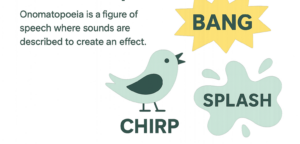


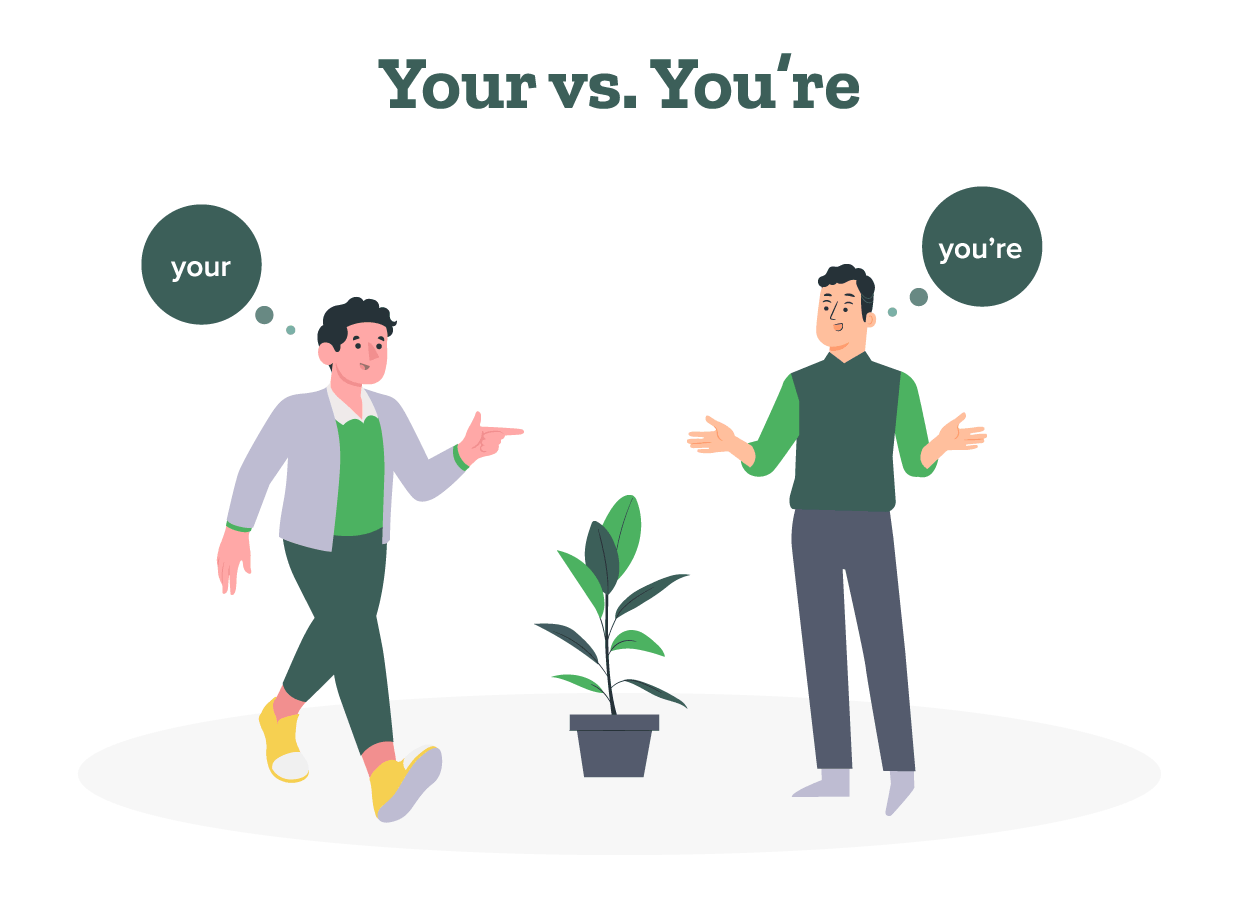
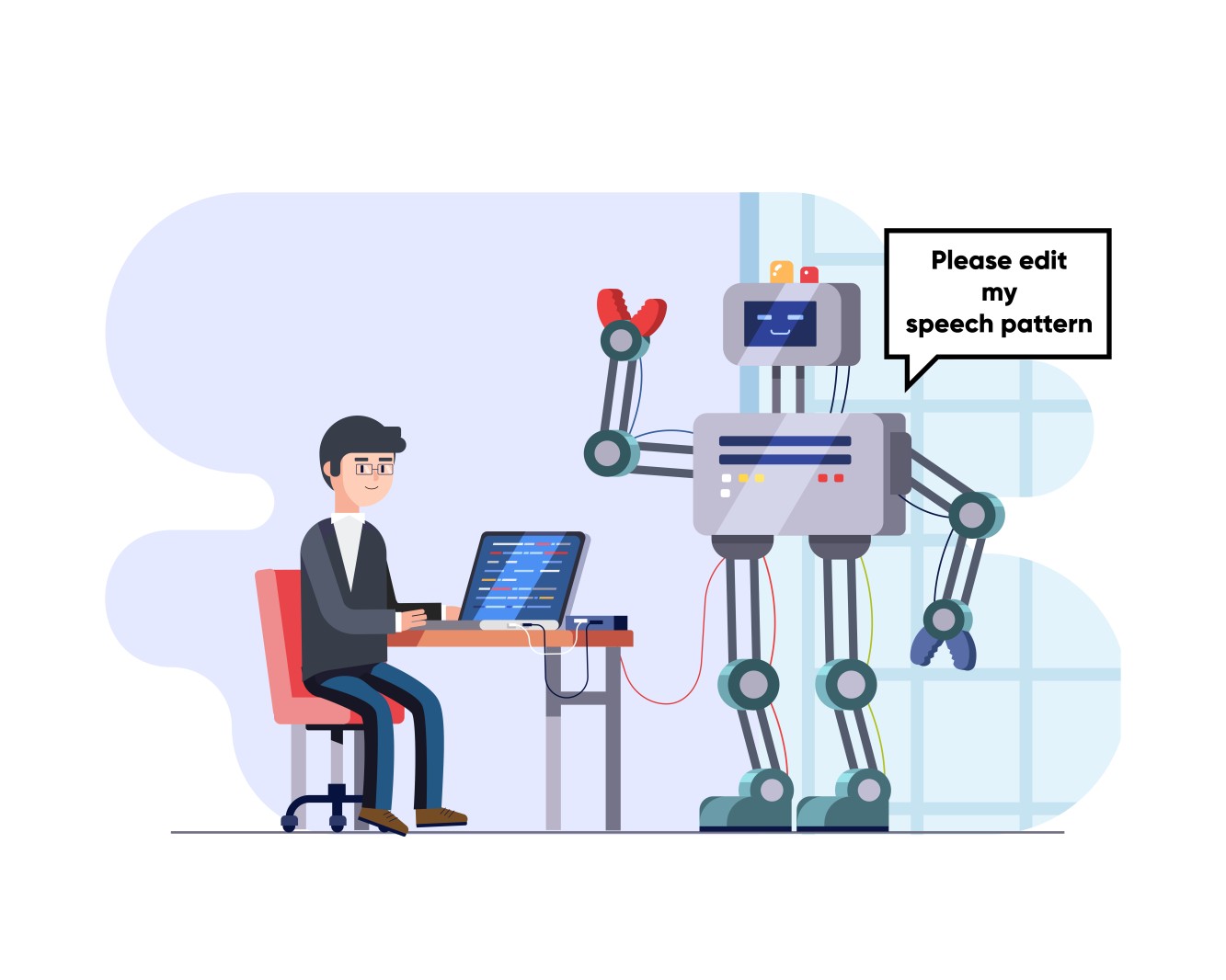
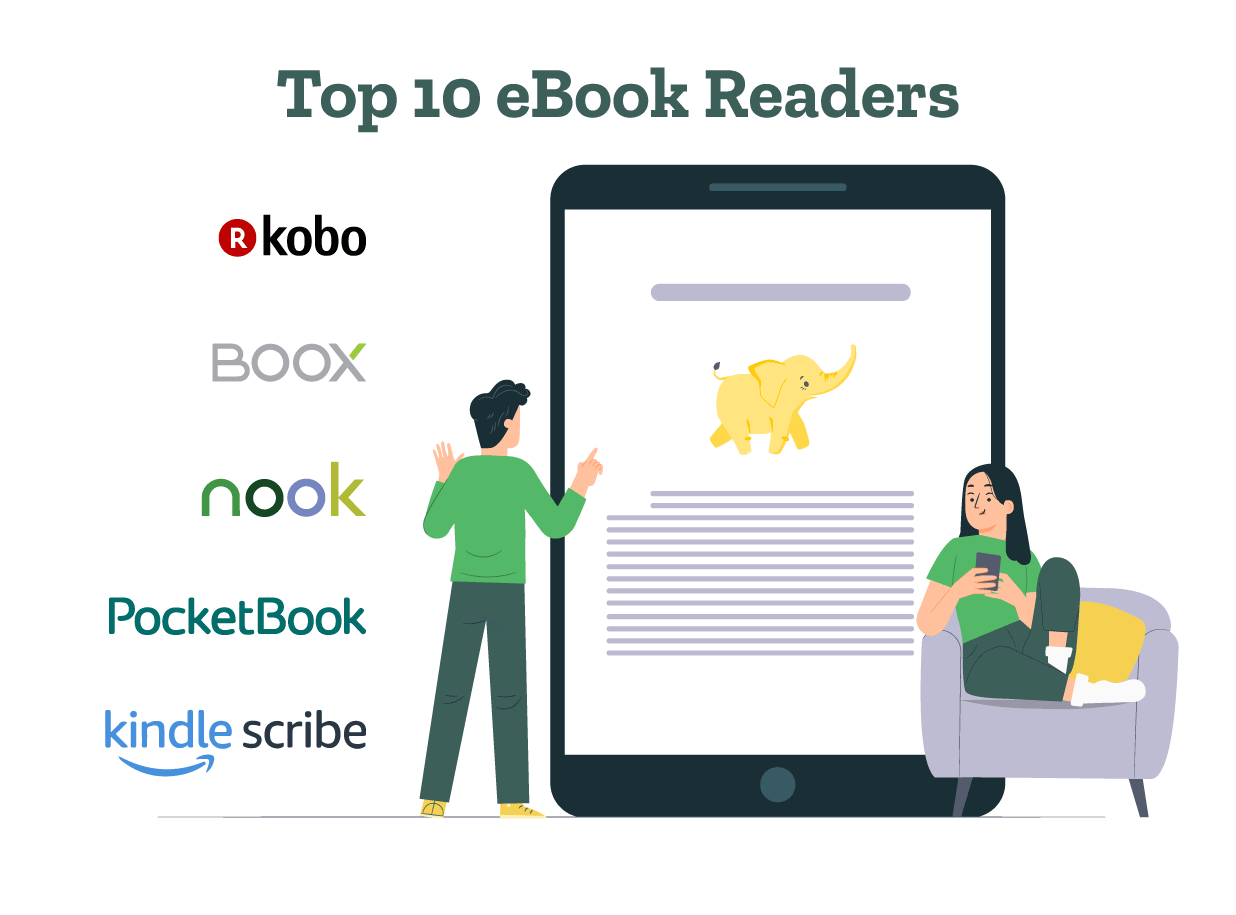
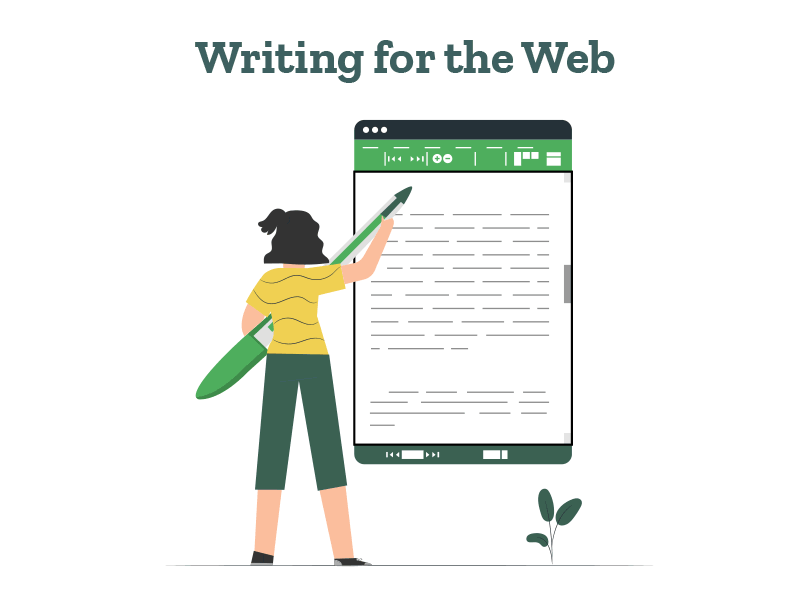
Thank its really helped me